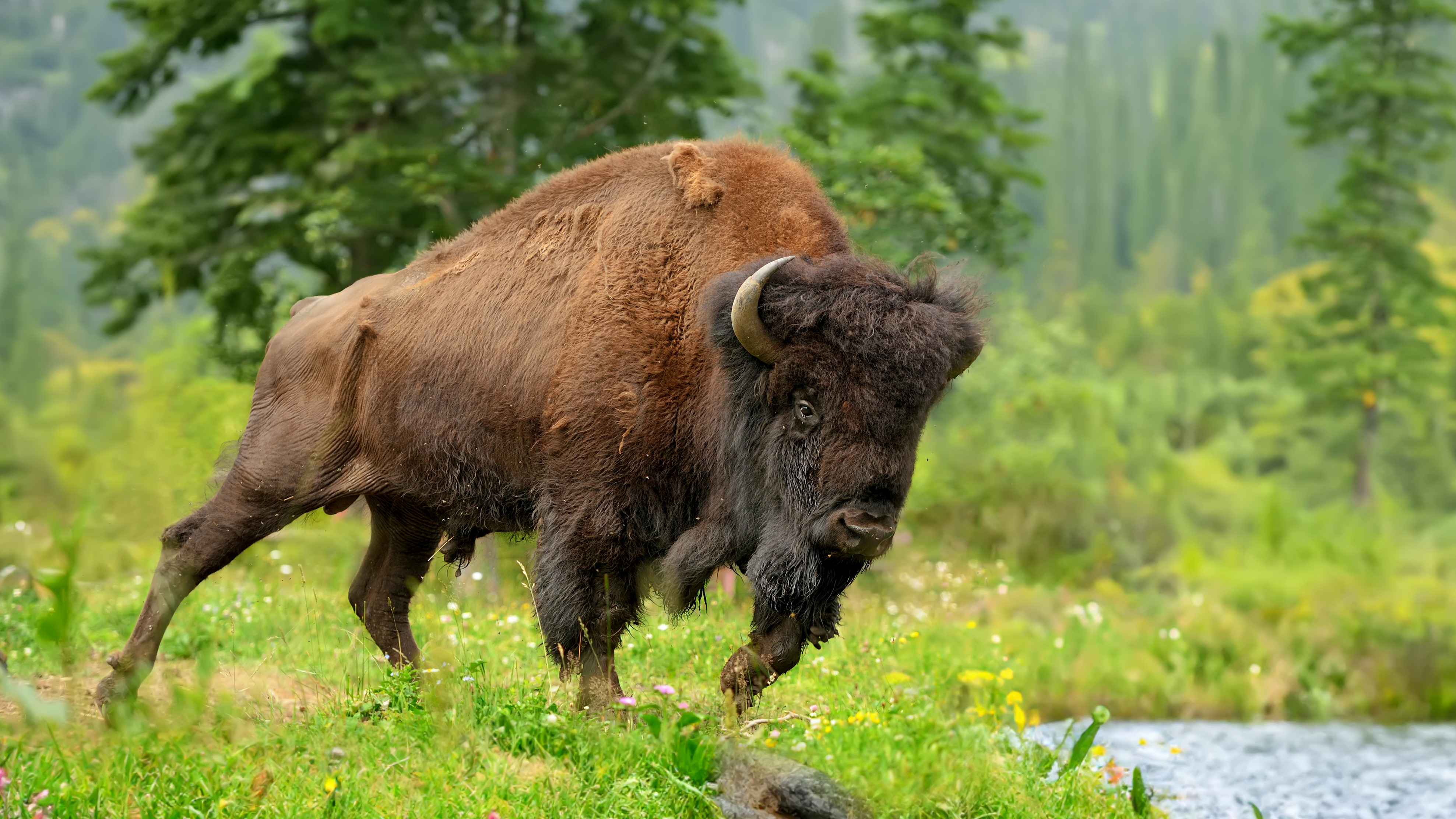
Bison are hugely powerful animals, and the best place to watch them is from inside a car, as one visitor discovered recently when one of the animals decided to charge their vehicle's rear bumper.
The incident was recorded by nursing student Max Lea and shared on Instagram account TouronsOfYellowstone. Usually the account calls out bad behavior at US National Parks (such as people trying to pet bison or chasing bears), but this time the driver was just unlucky to have their paintwork scraped by the animal's horns.
It's always wise to give bison a wide berth (the National Park Service recommends at least 25 yards, or 23 meters), and that's particularly true during late summer and early fall when the animals are in their mating season, known as the rut. Males are particularly territorial and unpredictable at this time, as they compete for dominance and the right to mate.
Bison often walk along roads at Yellowstone, as they're usually the easiest and most direct route between two points. If it's safe to pass the animals, you should do so slowly, giving them plenty of room.
"Use pullouts to watch wildlife and let other cars pass," says the NPS. "Stay with your vehicle if you encounter a wildlife jam."
Bison safety
Two women have been severely injured by bison at US National Parks this summer, and last year three people were gored by bison at Yellowstone within the space of a few weeks.
"Give bison space when they are near a campsite, trail, boardwalk, parking lot, or in a developed area," says the NPS. "If need be, turn around and go the other way to avoid interacting with a wild animal in close proximity.
"Approaching bison threatens them, and they may respond by bluff charging, head bobbing, pawing, bellowing, or snorting. These are warning signs that you are too close and that a charge is imminent."
If a bison is showing signs of aggression, don't try to stand your ground. Move back, and use your bear spray if the animal follows. For more advice, see our guides how to avoid being gored by a bison and wildlife safety: eight tips for unexpected encounters.
- The best binoculars: enjoy watching wildlife from a safe distance







